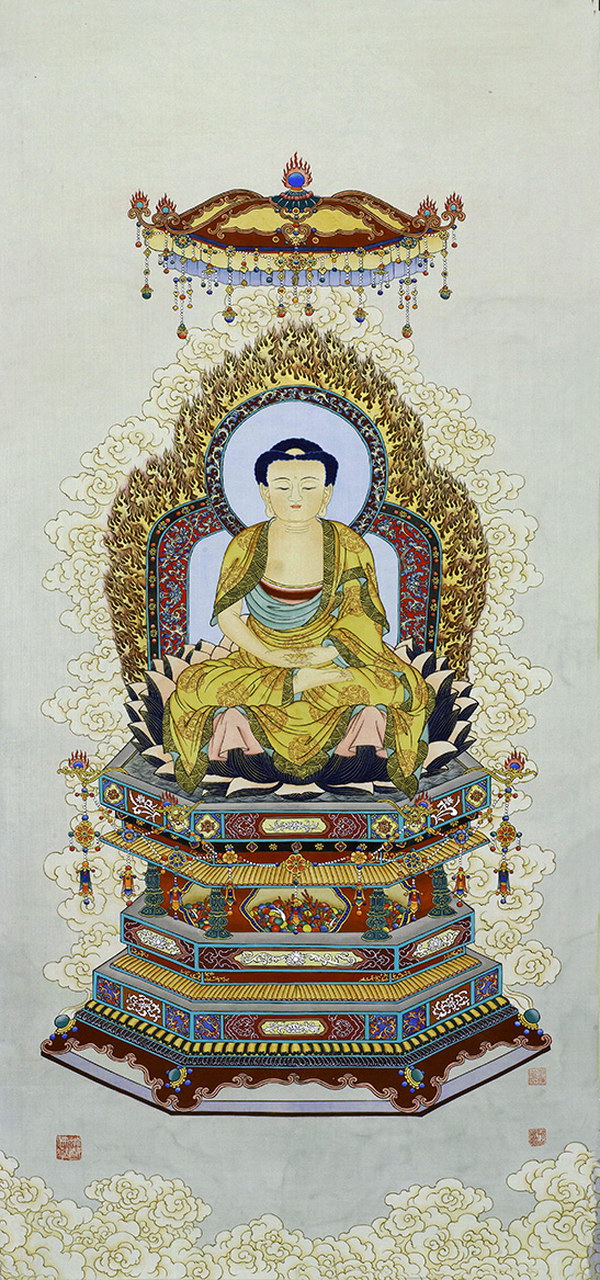
During his youth, Master Xia Jing Shan lived in Taiwan and then went overseas.He returned home in later years. He has been a prominent figure in the field of religious arts in China. In his published work, “Master Xia Jing Shan’s Chinese Buddhist Painting Collection,” there collected his earliest work of “The Arhats” he painted in 1968 followed by “Seven Worthies of Bamboo Grove” and “A Night Banquet in Taoli Yuan” in 1970. Master Xia then moved to settle down in California, the US in 1971. These paintings are the only collections that he painted in Taiwan. “A Night Banquet in Taoli Yuan” reveals the creation site of Master Xia in Taiwan,“I Chen Zhang Shi.” In addition to Buddha images, there are “the Arhats,”“Seven Worthies of Bamboo Grove,” “the Scroll Painting,” “Eight Immortal Figures,” “Zhong Qui,” and so on. It should have been named as “Chinese Daoism and Buddhism Painting Collection.
From the painting illustration, we knew the creation sites included I Cheng Zhang Shi in Taiwan, Los Angeles, Unpousou and Qingnan Art Studio in Kyoto,Japan, Zhennan Art Studio, Huayuan Art Studio, Wingnan Art Studio in Beijing,and Weifang, Shandong. Following the path, we will see the trace for Master Xia to return home.
As mentioned in the painting collection, after arriving in the US, Master Xia visited well-known museums around the world and has been devoted to the studies on Buddhism painting and arts. This illustration explains the image making element of Buddhism in his painting as well as the relationships with museum collections.In the illustration, examples of “Shi Jia Coming out from the Mountain” and “Wooden Colorful Painting of Four Heaven Kings of Ruiguang Tower, Suzhou” were shown as the reference of mimic paintings. In Samantabhadra Painting,” we see the combination of elements from various sources. For painting techniques,his figure paintings integrate both reality and implied meanings, one of his personal distinct features.
